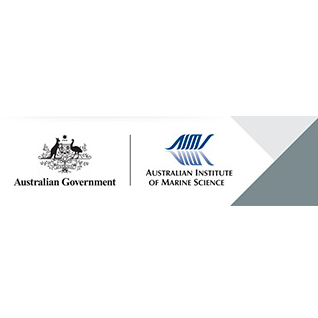Full description
Population genetic structure was studied in two nearshore (Fantome and Great Palm Islands) and two midshelf (Rib and 18-026) reef populations of Holothuria atra on the Great Barrier Reef. Two stations approximately 500 m apart were sampled on each reef (only 150 m apart at Fantome Island due to the limited area in which the species occurs). At each station, 30-40 adult individuals (generally > 50 g) were sampled within a radius of 30m from a marker buoy, in early November 1996. The sampling time in November was chosen to increase the likelihood of finding mature gonads in the sampled animals. Female gonads were dark red, male gonads were orange; several small gonads were examined microscopically to determine whether they were ovaries or testes. Several inidivduals had gonads which were either immature or not detectable, these were exluded from the male/female analyses but included in other analyses.Genetic variation at 5 polymorphic loci was examined using allozyme electrophoresis. The polymorphic enzymes examined were: GPI, HK, LP, PGD and PGM. Measures describing the genetic variables for females, males and unsexed individuals were: sample size per locus; number of alleles per locus; percentage of loci that were polymorphic; heterozygosity (observed=Ho, expected=He); genotypic diversity (observed=Go, expected=Ge, and the ratio of Go to Ge); sample size (Ni); number of genotypes ((observed=Ngo, expected=Nge).Calculation were made on: the number of sexually produced individuals (N*); and the ratios of Ngo to Nge; Ni to Ngo; N* to Ni.Average weight (g), for females, males and unsexed individuals were recorded; and sex ratios for all sexed individuals and estimated annual fission rates calculated.F-statistics were used to partition genetic variation into that occurring within populations (FIS) and that occurring between populations (FST) for males, females and total individuals for both original and clonal genotype frequencies.A dendrogram was created to show genetic relationships between the populations of the 8 sites using UPGMA cluster algorithm and Nei's unbiased genetic distance.To describe the genetic structures of Holothuria atra using allozyme electrophoresis to quantify the extent of asexual reproduction and to extimate the importance of sexual recruitment in this fissiparous holothurian.
Lineage
Maintenance and Update Frequency: notPlannedNotes
CreditUthicke, Sven, Dr (Principal Investigator)
Modified: 15 09 2025
text: westlimit=146.5; southlimit=-19.0; eastlimit=146.9; northlimit=-18.4
Genetic structure of fissiparous populations of Holothuria (Halodeima) atra on the Great Barrier Reef: Uthicke S, Benzie JAH and Ballment E (1998) Genetic structure of fissiparous populations of Holothuria (Halodeima) atra on the Great Barrier Reef. Marine Biology 132: 141-151.
local : articleId=1347
Techniques for enzyme electrophoretic analysis of the holothurians, Holothuria atra and Stichopus chloronotus (Holothuroidea: Aspidochirotida: Ballment E, Uthicke S, Peplow L and Benzie JAH (1997) Techniques for enzyme electrophoretic analysis of the holothurians, Holothuria atra and Stichopus chloronotus (Holothuroidea: Aspidochirotida. AIMS report no. 27. Australian Institute of Marine Science. 47 p.
local : articleId=3265
- global : 96b5892c-fd6f-41ae-bb8f-c37c961470da


